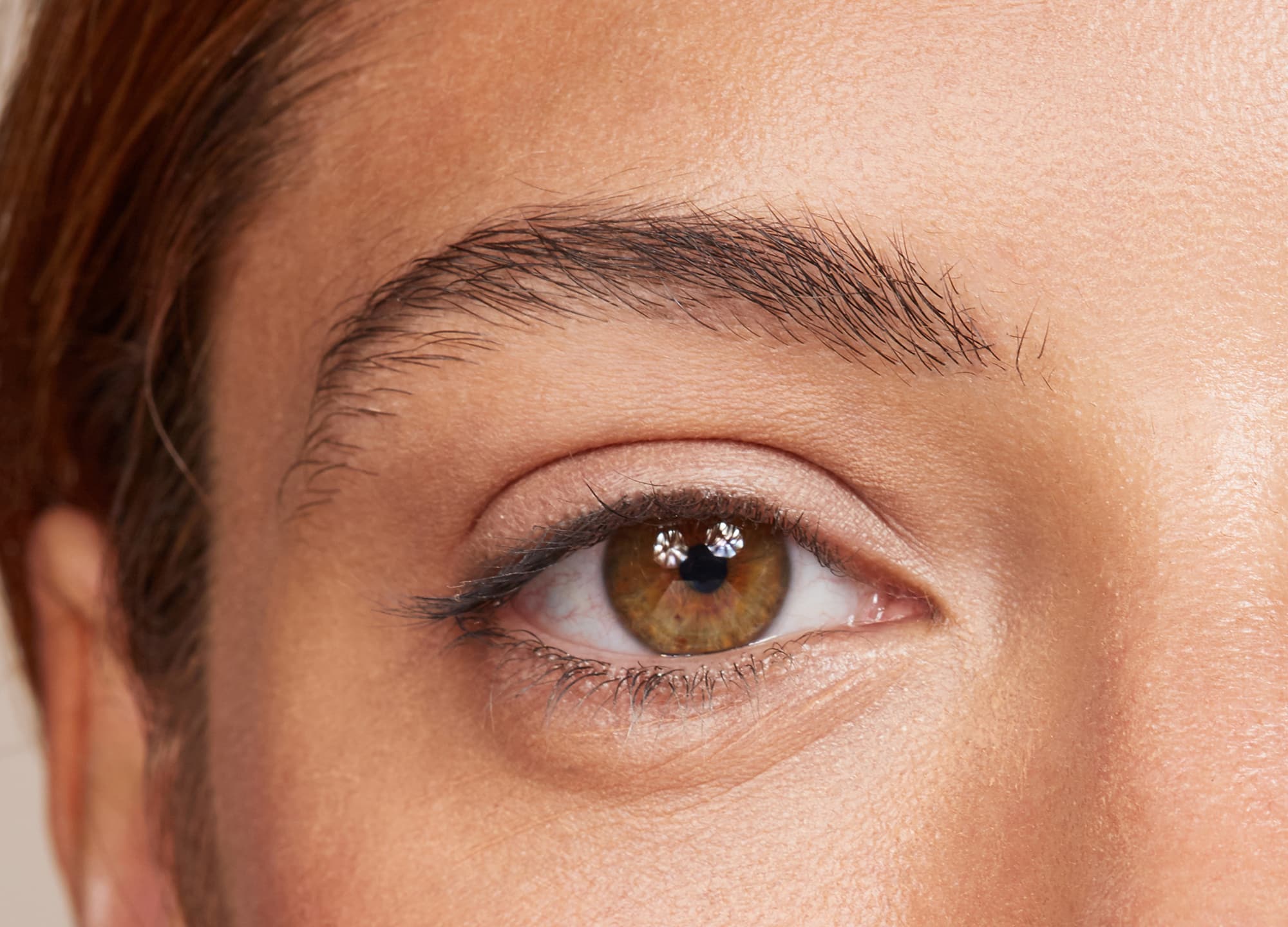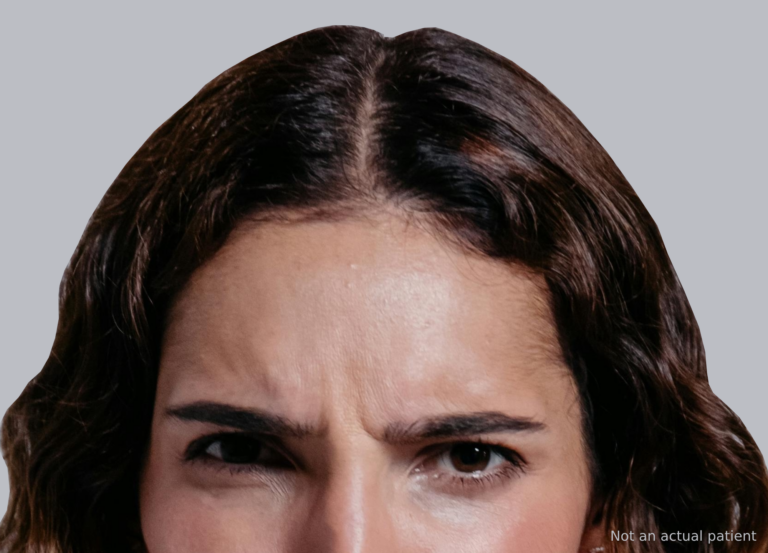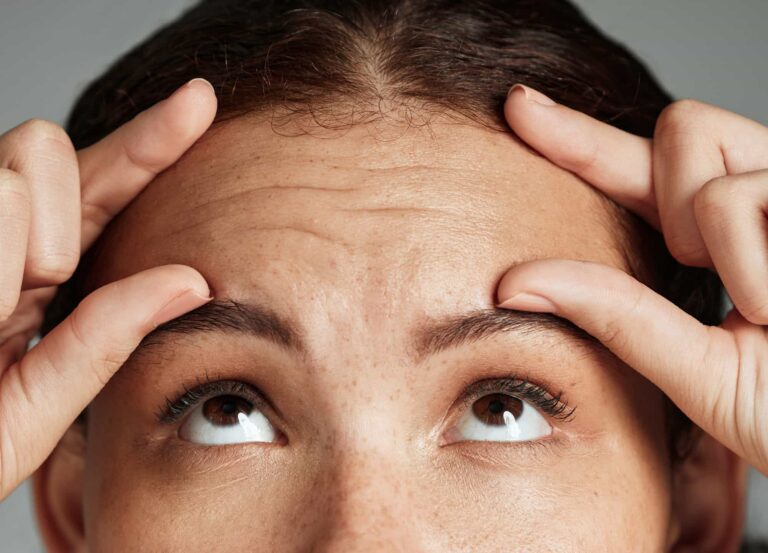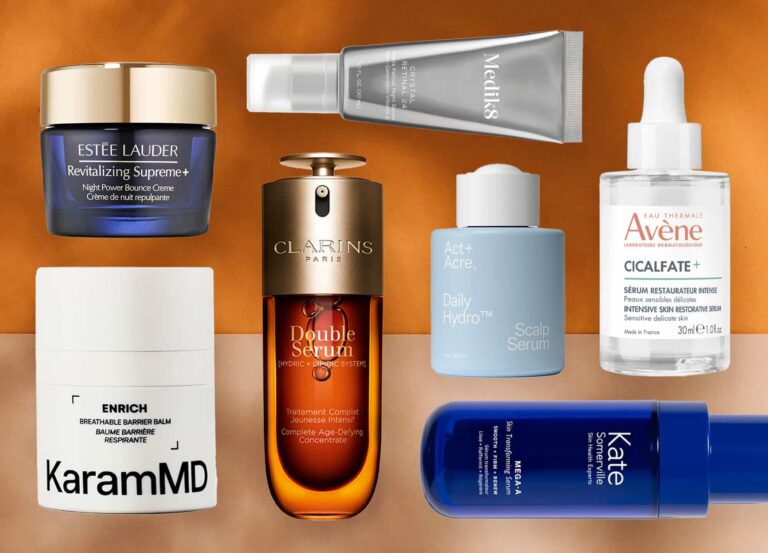It happened to me just the other day: I was rushing in the morning and quickly glanced at myself in a mirror on my way out the door—big mistake. The face looking back at me resembled the Crypt Keeper. I knew I felt tired, but the deep-blue hue under my eyes was bad enough to imply I hadn’t slept in days.
Unfortunately, I’m not the only one dealing with dark circles. Pretty much everyone—regardless of their job, age or lifestyle—has suffered from tired-looking eyes at one point or another. After all, the skin along the eye area is very thin (only about 0.5 mm thick) and has very few oil glands (making it prone to dehydration), which is why it’s so easy for that area to appear, well, tired.
Luckily, there are quite a few options to help lessen under-eye discoloration. We tapped a professional makeup artist and a board-certified dermatologist for their best advice for giving your delicate eye area a refresh—regardless of how much sleep you got the night before.
1) Change your lifestyle habits
Correcting dark circles can be a simple as changing your habits. From adding more sleep to your daily calendar to improving your overall health, diminishing the appearance of tired eyes doesn’t have to include pricey eye creams or in-office treatments. “There are various causes of under-eye dark circles, which can range from lack of sleep, aging, allergies or underlying health conditions, such as thyroid conditions, and heredity,” says New York City dermatologist Dr. Michele Green.
Dr. Green asserts that smoking is a major cause of under-eye circles since the habit restricts blood flow and inhibits quality sleep. Alcohol is another culprit for hollow under-eyes, due to its dehydrating effects. “Also, wearing eye protection when exposed to the elements and applying sunscreen in addition to wearing sunglasses when outdoors can improve and also prevent dark circles,” Dr. Green adds.
2) Pop a few antihistamines
Allergies—whether seasonal or food-related—are also often to blame. “Allergies can have negative effects on the under-eye area, causing puffiness and dark circles,” says Dr. Green. “Managing allergies can be beneficial to the overall appearance of the under-eyes.” Pro tip: take an antihistamine, like Zyrtec, at night in order to wake up looking brighter.
3) Dab on concealer
While concealer isn’t a cure for under-eye circles, per se, it will camouflage their appearance significantly. In fact, using the right combination of shades can erase just about all discoloration. According to professional makeup artist Julia Dalton-Brush, starting with a good base will ensure your under-eye makeup looks seamless and stays put all day. She recommends using the B3 Balm Nourishing Under Eye Cream ($42) pre-makeup application, since it contains helichrysum and lavender—two powerful ingredients to help get rid of puffiness and brighten.
“Next, the key thing to remember is that opposite colors cancel each other out, so look at a color wheel—Terri Tomlinson has one specifically for makeup—and figure out what your under-eye color is,” says Dalton-Brush. Once you identify the specific hue, look at the shade directly on the opposite side of the color wheel. “Usually, an orange shade will offset the blue-, purple-, gray- or brown-circle undertones,” she explains. Peach, on the other hand, will offset more yellow tones. If you do not have a color-correcting concealer, then find a fuller-coverage product about one to two shades lighter than your foundation and use your ring finger to tap it on, from the inner corner outward. Then take a small shadow brush and smooth it out. “The NARS Radiant Creamy Concealer ($30) is incredible,” says Dalton-Brush. The It Cosmetics Bye Bye Under Eye Full Coverage Anti Aging Concealer ($26) is another great option, especially since it comes in 48 shades, making it easy to find a color to match your skin tone.
Related: The Ultimate Guide to Better Brows—From Tints to Tattoos
4) Use caffeinated eye creams
Your brain isn’t the only thing that benefits from a morning caffeine boost. “Eye creams infused with caffeine work well for the under-eye area,” says Dr. Green. “The caffeine constricts the blood vessels, which improves the overall appearance of under-eye bags and dark circles.” A good option is the Peter Thomas Roth Potent-C Vitamin C Power Eye Cream ($65), which pairs caffeine with vitamin C to instantly brighten and depuff tired eyes.
Dr. Green says it’s also a smart idea to pick up eye creams that contain retinol, as they can improve under-eye darkness too. Since retinol stimulates collagen production, skin under the eyes will appear smoother and less transparent, making dark coloring less noticeable. However, retinol can make your skin even more sun-sensitive, so use the ingredient at night and wear SPF during the day.
5) Invest in filler injections
If your under-eye darkness is caused by shadows due to hollowness rather than to general exhaustion or unhealthy lifestyle choices, then fillers are an excellent option to improve the appearance. “The filler works to correct the decrease in fat along the supportive connective tissues of the under-eye area,” says Dr. Green. “Due to genetics and as you age, the tissue structures supporting the eyelids weaken and cause a hollowness and sagging of the skin.”
Hyaluronic fillers, such as Restylane and Juvéderm, work by adding volume along these weakened supportive tissues. This restores fullness to the under-eye structure, which decreases the hollowness and improves the overall appearance of the under-eyes. “An experienced dermatologist can tell whether your dark circles are caused by an increase in pigment under your eyes or hollowness,” adds Dr. Green. Consult your provider before scheduling an appointment for under-eye filler and make sure they’re experienced in injecting the area. While it’s a generally safe treatment, bruising, redness and swelling at the injection site are common side effects. There’s no downtime, results last around 12 months and the treatment costs an average of $750.
6) Try Thermage
Often, dark circles are accompanied by bags that appear loose and wrinkled. If this is the case for you, Thermage might be your best bet. “Thermage is an excellent treatment for the under-eye area and works on all skin types,” says Dr. Green. Thermage is an FDA-approved, noninvasive radiofrequency treatment that tightens the skin by delivering heat to the innermost layers of the dermis. “This deep-tissue heating stimulates collagen and improves the overall texture of the skin,” explains Dr. Green. Results typically appear gradually and are most noticeable at around three to six months post-treatment; they last up to two years. The average cost of the treatment is $2,000.
7) Consider microneedling with PRP
Another way to improve the under-eye area—especially if fine lines and bags are your main concerns—is microneedling with platelet-rich plasma (PRP). Microneedling is a nonsurgical treatment that pricks the skin with tiny needles to jump-start collagen production. It’s often paired with PRP, to supercharge its effects. “PRP is concentrated platelet-rich plasma protein, which has a greater concentration of growth factors than whole blood,” explains Dr. Green. “Growth factors are what our cells use to heal and regenerate healthy tissue, so this procedure is great for the under-eyes, to correct superficial lines and wrinkles.”
It’s important to note that this won’t specifically target darkness under the eyes; however, it will improve the overall appearance of the eye area. Keep in mind that it’ll take around five monthly treatments to experience the full effects of this procedure, and it costs an average of $625 per session.
Related: The Return of the CO2: Why These Next-Level Lasers are a Perfect Procedure for Fall
8) Schedule a laser appointment
Another recommendation from Dr. Green is Fraxel Dual, a treatment that uses a combination of nonablative and ablative lasers to treat sun damage, fine lines, wrinkles and uneven skin texture. “Fraxel Dual uses fractional laser technology that penetrates deep into the skin layers and triggers the body to promote its natural healing, improving the overall texture and skin tone,” says Dr. Green. “The results of Fraxel are gradual as the body replaces old, damaged skin cells with new collagen and elastin.” Like microneedling, Fraxel won’t address hollowness or major coloring issues under the eyes, but patients typically see visibly smoother, tauter skin just a couple weeks post-procedure, with continued improvement happening up to six months afterward.











